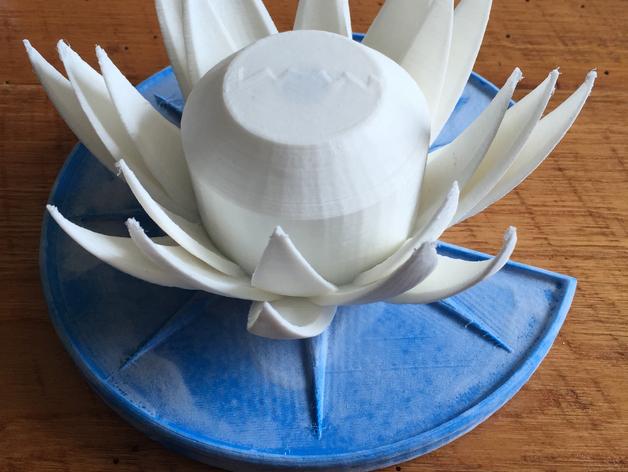
The premise for the floating lily pad was born because Jake Reeves’ parents made him skim the pool when he was a kid. What triggered that flashback was the Thingiverse Make It Float challenge.
“What I found was that many of the best responses to the challenge go beyond just 3D printing, but rather, they embrace the whole ‘Maker’ movement by utilizing Arduino or similar micro-controllers to bring life to their projects. Then, with the thought of using a micro-controller in mind, I began thinking of different summer float related things,” Reeves explained. “I quickly recalled skimming my parents’ pool as a kid and wanted to design a skimming robot of some kind. But skimming does not address the larger problem at hand, time after time, insects will return to the pool if not discouraged. I recalled something about using ultrasonic frequencies to repel insects, a quick web search provided me with the appropriate frequency range, and I was set; disguise it so that people may actually want to see it floating, and I was done.”
“There are two components that are 3D printed: the lilypad base and the waterlily top,” Reeves said. “These were both sprayed with a clear leak seal to prevent water from seeping through and damaging the electronics, which consisted of an ICStation Arduino Nano 3.0 board, 40kHz ultrasonic microphone, and a rechargeable 9V battery.”
“I have yet to test the bug repelling properties, though they are based on what I have read online which is that mosquitos and some other insects don’t like a certain range of frequencies. So, I chose part of that spectrum to try and repel the unwanted insects from pools and standing water. Mosquitos in particular dislike the 38kHz frequency as males emit that frequency, so during breeding the males avoid each other and when the females are preparing to give birth, they avoid the males to reduce competition over food.”
Let us know if this design might be one you’d like floating in your pool. Join the discussion in the 3D Printed Mosquito-Repelling Waterlily forum thread over at 3DPB.com.
